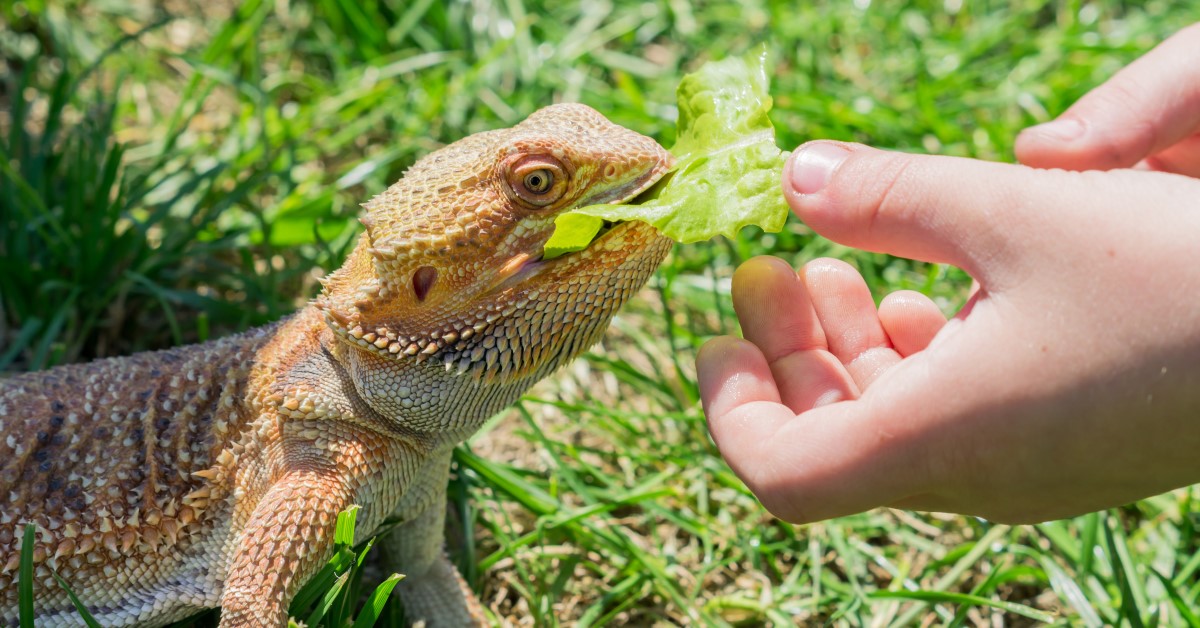Tips to Care for Your Pet Reptile During a Heatwave
Keeping your pet reptile healthy and comfortable during a heatwave requires some preparation and knowledge of proper summer care for lizards and other reptiles.

When summer temperatures start to soar, it’s important to pay extra attention to the health and well-being of your pet reptile. Unlike mammals, reptiles often rely on external heat sources to regulate their body temperature. This makes them particularly vulnerable to extreme heat. By taking the right precautions before a heatwave arrives, you can prevent serious health risks such as dehydration, heat stress, and heat stroke. Here are some reptile care and heatwave tips to keep your pet healthy this summer.
How Heat Waves Impact Pet Reptiles and Lizards
Reptiles are cold-blooded, also known as ectothermic, meaning they require external heat sources to regulate their body temperature. Unlike birds and mammals that can maintain a constant internal temperature, lizards and other reptiles must seek shelter or sun based on their temperature regulation needs at the time.
During a heatwave, temperatures can reach triple digits, disrupting this delicate balance. If the temperature inside your reptile’s enclosure is too high, your pet may have difficulty cooling down, resulting in overheating. If not promptly addressed, this can cause undue stress and possibly impair the reptile’s physiological processes, resulting in dehydration or heatstroke.
In the wild, reptiles are naturally inclined to move to a shady area to cool down when it gets too hot. If there is not a place in their habitat to cool down, it could cause your pet to become even more stressed. Prolonged exposure to high temperatures can result in serious health problems for your pet and may even be life-threatening.
Creating a Safe and Comfortable Environment for Your Pet
Don’t wait until a heatwave arrives to start preparing your reptile habitat. Preparation is the key to reptile safety and can mean the difference between a healthy and unwell pet. When creating a safe and comfortable environment for your pet reptile, keep the following in mind:
Managing Temperature in Your Reptile Enclosure
Take the time to carefully manage the temperature in your reptile’s enclosure to prevent overheating during a heatwave. If you don’t already have one, purchase a thermostat to help ensure that the temperature in the tank is within optimal range for your specific reptile species.
It may be necessary to introduce cooling solutions when the temperature starts to rise. Cooling methods such as fans, cooling mats, or air conditioning can help make the temperature more comfortable for your pet. However, it’s important to remember that reptiles also need heat. Be sure to have a designated area in the habitat that has a heat source if using cooling solutions like air conditioning.
Controlling Humidity and Hydration
Proper humidity and hydration are also major concerns during a heatwave. It may be necessary to find ways to increase the humidity in the tank if the heat wave causes the humidity to drop.
Misting systems or humidifiers work well to increase the humidity in reptile enclosures. You may also want to set up a system that allows for regular misting inside the tank to maintain proper humidity levels, which is particularly important for certain reptile species.
To keep your pet well hydrated, be sure to provide constant access to fresh, clean water. If the tank is large enough, place two different water dishes in the enclosure, one where your pet can drink and another that they can soak in if needed.
Monitoring and Adjusting Care for Your Pet Lizard
Throughout the duration of the heatwave, you’ll want to closely monitor your pet reptile to ensure that its environmental conditions remain safe and comfortable. Keep a close eye on the thermostat and humidity gauge to track the temperature and moisture levels in the tank. Consider a smart digital thermostat that will alert you when the temperature fluctuates too much.
It may be necessary to adjust your reptile’s enclosure as the heatwave continues. Be sure that your pet has shaded areas and hiding spots in the enclosure where they can escape the direct heat. Ventilation also shouldn’t be overlooked as poor ventilation can cause heat to build up. The use of mesh lids, installing small fans, and creating airflow gaps can help boost air circulation.
Preparing for Heat-Related Emergencies for Your Reptile
While there’s always hope that the heatwave passes quickly and that everyone remains healthy, it’s important to prepare for the unexpected. Heat-related emergencies can be stressful for all involved but with the proper preparation, you can help prevent heat-related illnesses.
If you experience a power outage that causes your pet’s cooling solutions to turn off, try to have a backup power supply on hand. Whether that be a portable generator or a battery-operated fan, these essentials can help keep your reptile safe from high temperatures.
Also, know how to react when your pet experiences a heat-related emergency. If you notice symptoms such as excessive panting, lethargy, or other unusual behavior, do your best to cool down the enclosure as quickly as possible. Provide fresh water and create a cool spot. If your pet’s condition does not improve, contact your veterinarian.
Keeping Your Pet Reptile Safe During a Heatwave
Being prepared to care for your pet during a heatwave can help ensure that your reptile remains safe and comfortable until temperatures drop. When prepared, most reptiles and lizards can tolerate a few days of hot temperatures without any lingering effects.
Ready to start saving money on pet wellness care?
Then take a look at Mint Wellness, the pet wellness plan that provides fast reimbursement on routine pet care. Save on vaccinations, wellness exams, preventatives, dental, and more!
Learn More